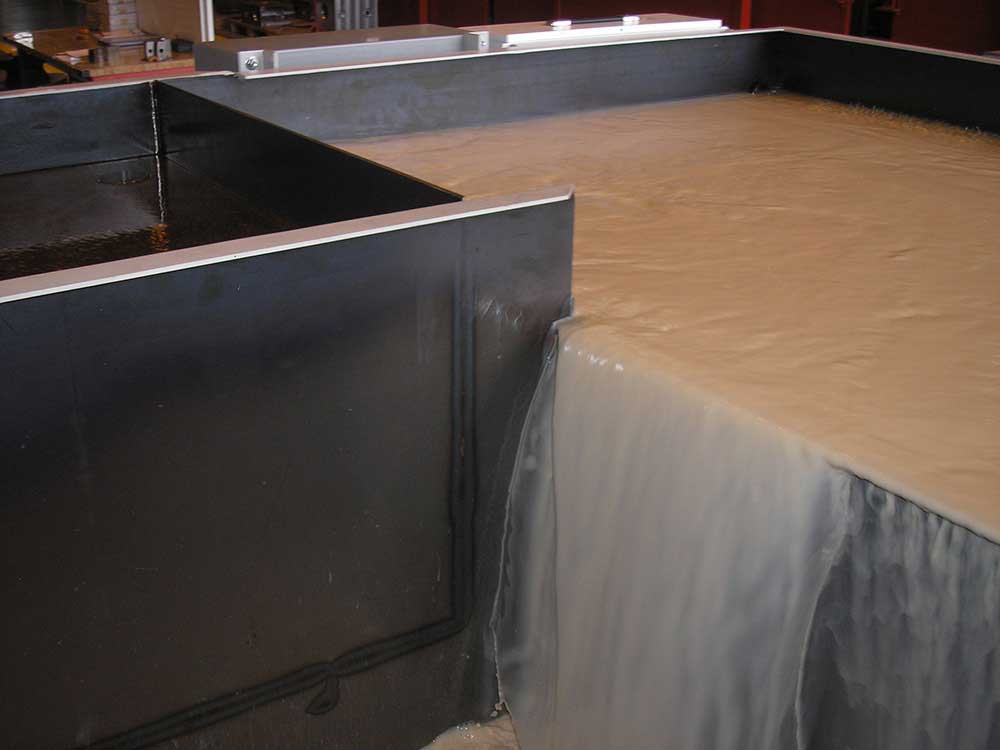Minimize maintenance & haul-away costs with a solid bowl industrial centrifuge.
Separate solids from liquids where removal of fines is important for recycle and reuse goals. The PRAB industrial centrifuge is ideal for separating all types of ferrous and non-ferrous solids from oils and water-based coolant with flow rates up to 50 gpm. Eliminates consumable media and minimizes maintenance.
PRAB’s solid bowl industrial centrifuge is specifically engineered for heavy-duty applications, such as chip processing and industrial wastewater treatment. Our centrifuge provides consistent, reliable operation over long lifecycles.
The industrial centrifuge effectively separates solids from liquids in metal processing applications where removal of fines is important to recycle and reuse goals. It provides high performance liquid/solid separation for all types of particles including metallic, ferrous, non-ferrous and non-metallic solids. Available in manually cleaned basket style (complete with reusable liner), semi-automatic, and fully automatic self-cleaning designs.
Benefits and Features
PRAB’s liquid/solid industrial centrifuge is designed exclusively for industrial use in the following applications:
PRAB’s solid bowl manual clean industrial centrifuge is designed exclusively for industrial use. Process liquid is either pumped or gravity fed to the centrifuge inlet. Process solids are centrifugally separated from the liquid phase and collected in the rotor that has an easily removable flexible liner. The entire clean-out process can be accomplished in as little as 5 minutes with the inclusion of a spare liner.
Using no filters or consumables and very few moving parts, the feed enters the dirty liquid inlet and progresses upward through the rotor body. Centrifugal force is applied to the liquid stream in the main body of the rotor, causing solid particulate to move toward the rotor wall. Solids are deposited at the rotor perimeter while clean liquid overflows through the top of the rotor. The clean overflow discharges at atmospheric pressure via gravity through the clean liquid outlet. Solids deposited in the rotor are compacted by centrifugal force and allowed to build up until they are removed during the cleaning cycle. The clean cycle is manually initiated by the operator.
Using no filters or consumables and very few moving parts, the feed enters the dirty liquid inlet and progresses upward through the rotor body. Centrifugal force is applied to the liquid stream in the main body of the rotor, causing solid particulate to move toward the rotor wall. Solids are deposited at the rotor perimeter while clean liquid overflows through the top of the rotor. The clean overflow discharges at atmospheric pressure via gravity through the clean liquid outlet. Solids deposited in the rotor are compacted by centrifugal force and allowed to build up until they are removed automatically during the pre-set cleaning cycle.
For operations where a standard, lined-bowl centrifuge is not sufficient, PRAB offers specialty units.
Using no filters or consumables and very few moving parts, feed enters the dirty liquid inlet and progresses upward through the rotor body. Centrifugal force is applied to the liquid stream in the main body of the rotor, causing solid particulate to move toward the rotor wall. Solids are deposited at the rotor perimeter while clean liquid overflows through the top of the rotor. The clean overflow discharges at atmospheric pressure via gravity through the clean liquid outlet. Solids deposited in the rotor are compacted by centrifugal force and allowed to build up until they are removed during the pre-set automatic cleaning cycle. All wetted parts are made of 316L stainless steel.
The feed is introduced to the rotating centrifuge bowl from the top and is accelerated in a distributor before entering the disc stack. It is between the discs that the separation takes place. The water and heavier solids are forced towards the bowl wall where the solids accumulate and the water proceeds over the top disc to a clean outlet. The light phase moves towards the center and leaves the bowl through an open outlet (oil discharge). The machine can have a manual or automatic solids cleaning cycle depending upon the chosen unit.
Product Brochures
Product Brochure: Automatic Centrifuge
Product Brochure: Manual Centrifuge
Product Brochure: Semi-Automatic Centrifuge
White Paper
White Paper: Green Engineering
White Paper: Making Wastewater Compliance Part of A Profit Strategy
White Paper: Taking Control of Wastewater Treatment
Other Downloadable Content
PRAB Fluid Filtration Solutions Product Selection Chart Brochure
PRAB Fluid Filtration Systems and Wastewater Treatment Brochure
PRAB Filtration Spectrum Brochure
PRAB Builds Equipment for the Toughest Jobs in Manufacturing and Metalworking
PRAB completes comprehensive sample testing to establish an accurate understanding of the unique characteristics of your mixed solution and its industrial applications. This test determines the correct centrifuge system design and capacity to optimizes the filtration process within your facility.
To receive a free test contact us today at (800) 968-7722.

Green Engineering How to Design More Profit into the Metalworking Operation By Ron Chapman, Systems Sales Manager & Teresa Phillips, Senior Marketing Specialist, PRAB Introduction The green movement is not a new concept. In fact, the basic principles were well-known throughout Europe in the medieval era. However, it was the Industrial Revolution in Europe that […]
Download Eliminate Consumable Media and Minimize MaintenanceDischarge Solids to Waste Drum Using no filters or consumables and very few moving parts, the PRAB Semi-Automatic Centrifuge moves solid particulate away from liquid and toward the rotor wall, where it is compacted and can be removed during cleaning. Features: Carbon steel enclosure and aluminum rotor Bottom non-clogging 1″ injector […]
Considering Environmental Impact and Other Motivating Factors Beyond Mere Compliance By Tim Hanna, Vice President of Business Development, PRAB Introduction On a global level, wastewater treatment is an increasingly critical topic of discussion that has been addressed at the very highest levels of government and major corporations. […]